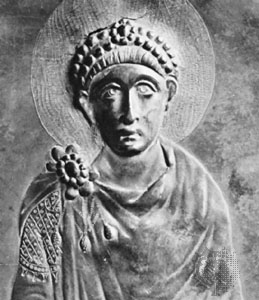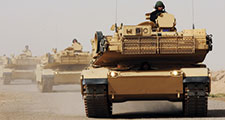Industrial Revolution, in modern history, the process of change from an agrarian and handicraft economy to one dominated by industry and machine manufacturing. This process began in Britain in the 18th century and from there spread to other parts of the world. Although used earlier by French writers, the term Industrial Revolution was first popularized by the English economic historian Arnold Toynbee (1852–83) to describe Britain’s economic development from 1760 to 1840. Since Toynbee’s time the term has been more broadly applied.
- The invention of power looms at the time of the Industrial Revolution dramatically increased the …Hulton Archive/Getty Images
A brief treatment of the Industrial Revolution follows. For full treatment, see Europe, history of: The Industrial Revolution.
The main features involved in the Industrial Revolution were technological, socioeconomic, and cultural. The technological changes included the following: (1) the use of new basic materials, chiefly iron and steel, (2) the use of new energy sources, including both fuels and motive power, such as coal, the steam engine, electricity, petroleum, and the internal-combustion engine, (3) the invention of new machines, such as the spinning jenny and the power loom that permitted increased production with a smaller expenditure of human energy, (4) a new organization of work known as the factory system, which entailed increased division of labour and specialization of function, (5) important developments in transportation and communication, including the steam locomotive, steamship, automobile, airplane, telegraph, and radio, and (6) the increasing application of science to industry. These technological changes made possible a tremendously increased use of natural resources and the mass production of manufactured goods.

There were also many new developments in nonindustrial spheres, including the following: (1) agricultural improvements that made possible the provision of food for a larger nonagricultural population, (2) economic changes that resulted in a wider distribution of wealth, the decline of land as a source of wealth in the face of rising industrial production, and increased international trade, (3) political changes reflecting the shift in economic power, as well as new state policies corresponding to the needs of an industrialized society, (4) sweeping social changes, including the growth of cities, the development of working-class movements, and the emergence of new patterns of authority, and (5) cultural transformations of a broad order. Workers acquired new and distinctive skills, and their relation to their tasks shifted; instead of being craftsmen working with hand tools, they became machine operators, subject to factory discipline. Finally, there was a psychological change: confidence in the ability to use resources and to master nature was heightened.
The first Industrial Revolution
In the period 1760 to 1830 the Industrial Revolution was largely confined to Britain. Aware of their head start, the British forbade the export of machinery, skilled workers, and manufacturing techniques. The British monopoly could not last forever, especially since some Britons saw profitable industrial opportunities abroad, while continental European businessmen sought to lure British know-how to their countries. Two Englishmen, William and John Cockerill, brought the Industrial Revolution to Belgium by developing machine shops at Liège (c. 1807), and Belgium became the first country in continental Europe to be transformed economically. Like its British progenitor, the Belgian Industrial Revolution centred in iron, coal, and textiles.
France was more slowly and less thoroughly industrialized than either Britain or Belgium. While Britain was establishing its industrial leadership, France was immersed in its Revolution, and the uncertain political situation discouraged large investments in industrial innovations. By 1848 France had become an industrial power, but, despite great growth under the Second Empire, it remained behind Britain.
Other European countries lagged far behind. Their bourgeoisie lacked the wealth, power, and opportunities of their British, French, and Belgian counterparts. Political conditions in the other nations also hindered industrial expansion. Germany, for example, despite vast resources of coal and iron, did not begin its industrial expansion until after national unity was achieved in 1870. Once begun, Germany’s industrial production grew so rapidly that by the turn of the century that nation was outproducing Britain in steel and had become the world leader in the chemical industries. The rise of U.S. industrial power in the 19th and 20th centuries also far outstripped European efforts. And Japan too joined the Industrial Revolution with striking success.
- Overview of Germany’s economic boom in 1870–71.Contunico © ZDF Enterprises GmbH, Mainz
The eastern European countries were behind early in the 20th century. It was not until the five-year plans that the Soviet Union became a major industrial power, telescoping into a few decades the industrialization that had taken a century and a half in Britain. The mid-20th century witnessed the spread of the Industrial Revolution into hitherto nonindustrialized areas such as China and India.
The second Industrial Revolution

Despite considerable overlapping with the “old,” there was mounting evidence for a “new” Industrial Revolution in the late 19th and 20th centuries. In terms of basic materials, modern industry began to exploit many natural and synthetic resources not hitherto utilized: lighter metals, new alloys, and synthetic products such as plastics, as well as new energy sources. Combined with these were developments in machines, tools, and computers that gave rise to the automatic factory. Although some segments of industry were almost completely mechanized in the early to mid-19th century, automatic operation, as distinct from the assembly line, first achieved major significance in the second half of the 20th century.
- Women working machines at the American Woolen Company, Boston, c. 1912.Library of Congress, Washington, D.C. (cph 3c22840)
Ownership of the means of production also underwent changes. The oligarchical ownership of the means of production that characterized the Industrial Revolution in the early to mid-19th century gave way to a wider distribution of ownership through purchase of common stocks by individuals and by institutions such as insurance companies. In the first half of the 20th century, many countries of Europe socialized basic sectors of their economies. There was also during that period a change in political theories: instead of the laissez-faire ideas that dominated the economic and social thought of the classical Industrial Revolution, governments generally moved into the social and economic realm to meet the needs of their more complex industrial societies.





















